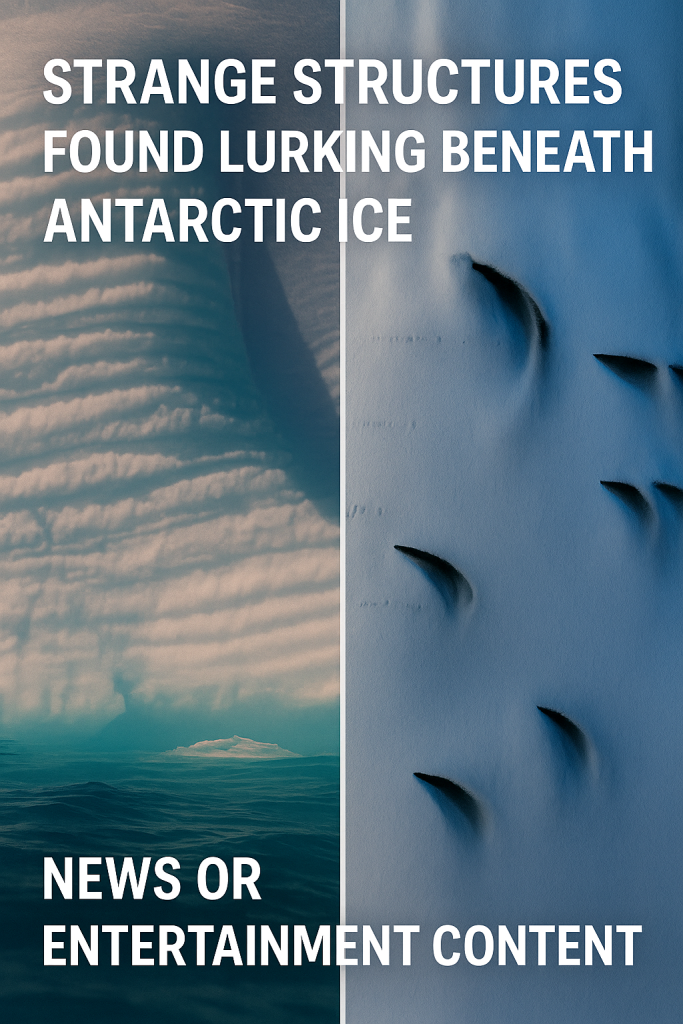Scientists have uncovered strange and unusual structures lurking deep beneath the Antarctic ice sheet, igniting fresh intrigue about the continent’s hidden landscape. Recent satellite data and ice-penetrating radar scans have revealed formations that challenge current understanding of Antarctica’s geology and raise questions about what lies beneath the frozen surface.
In early 2024, researchers conducting a series of extensive geophysical surveys detected atypical elevated formations underneath several kilometers of ice. These shapes resemble vast, symmetrical mounds and ridges, some measuring tens of meters in height and stretching over dozens of kilometers in width. Unlike the natural rocky outcrops and subglacial mountains already known in Antarctica, these newly identified structures have a peculiar regularity and geometric pattern, unlike typical geological formations.
The discovery was made possible through improvements in radar technology, allowing scientists to peer through the thick ice sheets with unprecedented resolution. By analyzing reflections from radar waves bouncing off sub-ice features, they were able to map the contours of these anomalous formations. Subsequent analysis has excluded many conventional explanations, such as volcanic activity or known tectonic movements, thus deepening the mystery.
Experts believe these structures may represent ancient geological formations that have remained hidden and untouched for millions of years, preserved in the frigid conditions and insulated beneath the ice layer. One hypothesis is that these could be remnants of an ancient plateau or other unique landforms shaped during a dramatically different Antarctic climate period, before the ice sheets expanded to cover the continent.
Another theory drawing attention is the idea that these patterns might be linked to subglacial hydrological systems. Researchers speculate that the strange shapes could be formed by channels carved out by massive flows of water trapped beneath the ice, which then froze and morphed over time into these distinctive formations. However, this theory requires much greater exploration and data collection to confirm.
The findings have sparked excitement among the global scientific community, as they potentially provide a new window into Antarctica’s hidden past and the processes shaping its ice-covered landscape. Understanding these structures could inform climate models by revealing how Antarctica’s ice responds to underlying geographic features, impacting ice flow and stability amid global warming.
Despite the progress, there remain significant challenges to fully deciphering the nature of these formations. Antarctica’s extreme environment and ice thickness make direct exploration difficult. Future missions combining satellite surveillance, autonomous underwater vehicles, and ice-penetrating instruments are planned to gather more detailed measurements and samples.
This discovery also feeds public fascination with Antarctica’s mysteries, conjuring images of undiscovered ecosystems or even artificial constructs—though scientists emphasize there is no evidence supporting anything beyond natural geological and hydrological processes.
For now, the strange structures beneath the Antarctic ice offer a tantalizing glimpse of Earth’s least understood continent, reaffirming that beneath the vast ice sheet lies a landscape full of secrets still waiting to be revealed.



